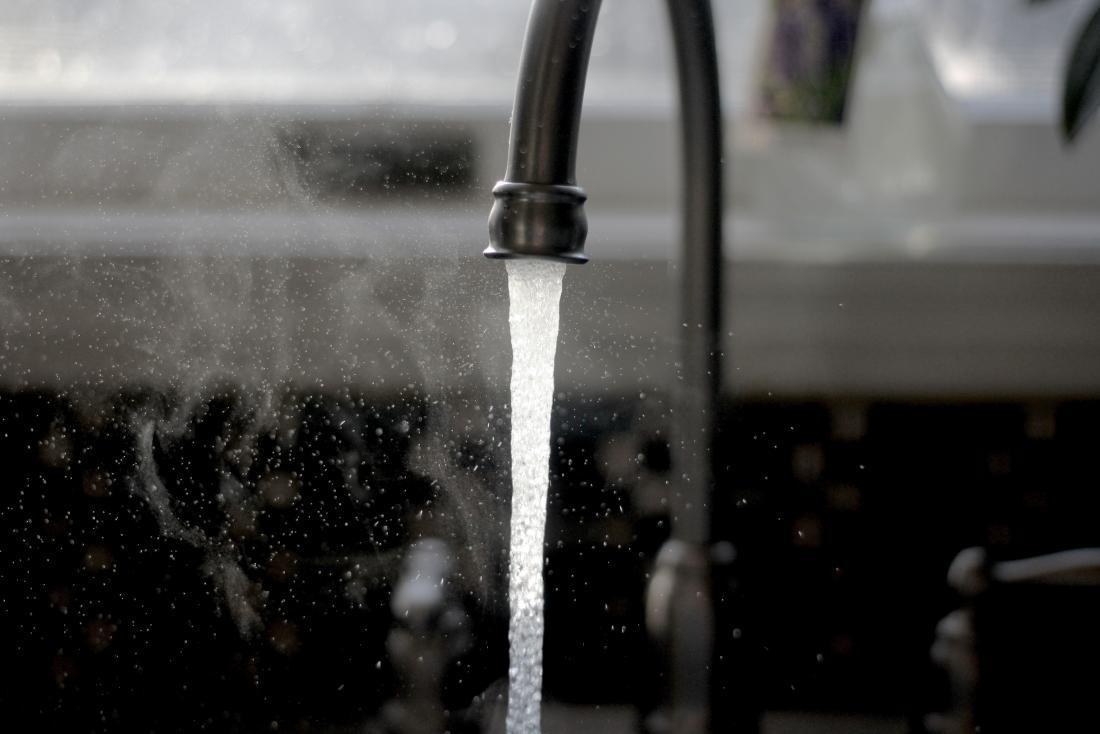What happens when you remove fluoride from tap water?
If you live in the United States, it is very likely that the tap water you use is fortified with fluoride, a substance that helps prevent tooth decay. The capital Alaska has discontinued this practice due to fears that fluoridated water could increase the risk of other diseases. What happened?
Share on PinterestThe city and borough of Juneau, AK have stopped adding fluoride to municipal water sources. What were the results of that decision?
Most regions of the United States and a few other countries around the world add certain amounts of fluoride to their municipal water supplies.
They do this because fluoride is effective in preventing or, in some cases, reversing the formation of tooth cavities. Fluoride promotes the remineralization of teeth, strengthens their enamel and thus helps them fight the bacteria that cause tooth decay.
For the same reason, most types of toothpaste and many mouthwash products contain some fluoride. However, ingested fluoride builds up in our bones, which has led some people to worry that drinking fluorinated water could increase the risk of various health problems. This includes cancer, particularly osteosarcoma, a type of cancer that starts in the bones.
These concerns led the Juneau City Council to order the cessation of fluoridation of community water in their area with effect from 2007.
In a new study recently published by the journal BMC Oral Health, a research team from the College of Health Sciences at Walden University in Minneapolis, MN and the College of Health at University of Alaska Anchorage assessed the impact of this decision on the oral health of the young residents of Juneau.
The research team, led by Jennifer Meyer of the University of Alaska Anchorage, examined the dental records of all children and teenagers in Juneau who had access to dental services through Medicaid in 2003 and 2012.
Meyer and colleagues viewed 2003 as “the best year for water fluoridation in the community” and analyzed the dental needs of 853 children and adolescents up to the age of 18 who received dental care that year.
The researchers compared this data with that of 1,052 children and adolescents who received dental care in 2012, 5 years after the Juneau city council voted to end municipal water fluoridation.
The data analysis showed that, as the authors of the study write, “the average number of caries-related procedures for the age groups from 0 to 18 years in the treatment group in 2012 was significantly higher” when the community water no longer contained fluoride. than in the 2003 group before the decision to end water fluoridation.
In particular, “the probability that a child or adolescent underwent a dental caries procedure in 2003 was 25.2 [percent] less than that of a child or adolescent in [2012]“Explain the study authors.
This suggests that the added fluoride had a protective effect on oral health that is now lacking as the municipal water supply is no longer going through the fluoridation process.
Meyer and his team also found that the cost of dental care for Juneau residents ages 0-18 had increased significantly in 2012 compared to 2003, even after adjusting for the effects of inflation.
However, a more intriguing finding from the study was that children under 7 received more interventions to treat tooth decay in 2012 than children who were in the same age group in 2003.
In 2012, the researchers again found a corresponding increase in the cost of dental care for young children.
“Adjusted for inflation, we observed an increase in the cost of caries treatment by 73 [percent] attributed to [community water fluoridation] Setting and valued at around USD 255.60, “the authors conclude:
“The results of this study confirm the benefits of optimal [community water fluoridation] supported by previous research and may provide additional research-based evidence of the oral health consequences and costs that may arise, if so [community water fluoridation] is set. “
Since fluoride occurs naturally in water, the municipal water sources for Juneau will still contain some of this mineral even after the artificial fluoridation has ended.
Meyer and his team found, however, that fluoride occurs naturally in much smaller amounts than what experts consider “optimal for preventing tooth decay”. In fact, the fluoride levels in Juneau’s water sources are more than ten times lower than optimal levels for oral health.
“Previous studies have shown that teeth without an optimal fluoride content in the drinking water and thus in the mouth and saliva can form with weaker enamel and are not able to remineralize early signs of tooth decay,” warn the researchers of the study.
We have selected linked items based on the quality of the products, and listed the pros and cons of each item to help you figure out which will work best for you. We work with a few companies that sell these products. This means that Healthline UK and our partners may earn some of the sales if you shop through one or more links above.



Comments are closed.